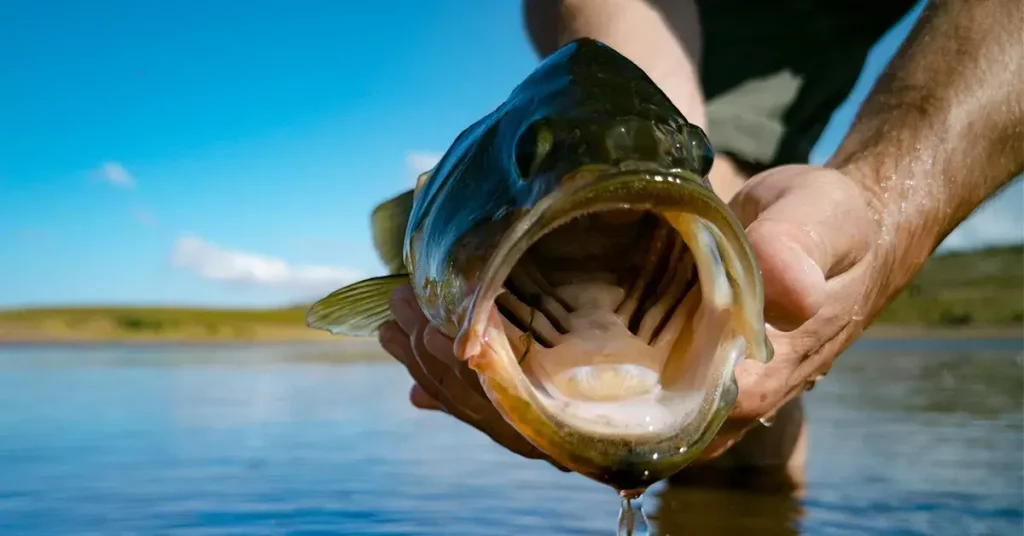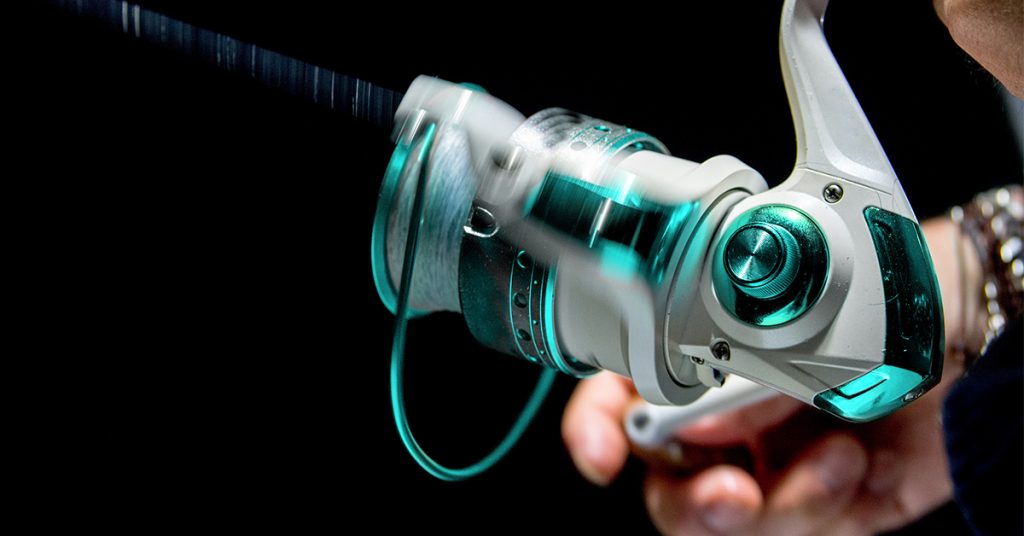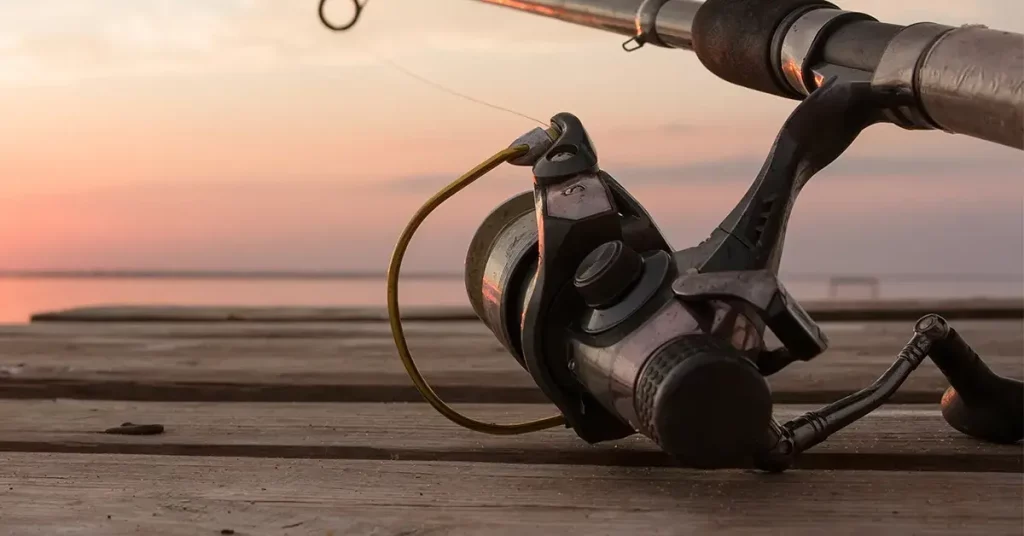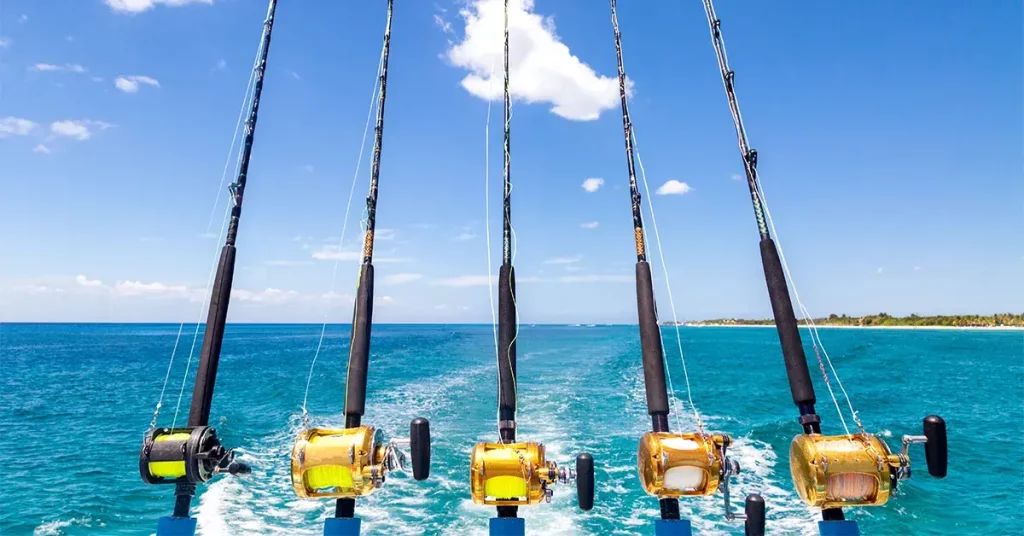One of the most satisfying parts of landing a beautiful bass is snapping a nice photo to show off your catch! As anglers, it’s important we take care to preserve the well-being of our local fish populations. That’s why its so important to hold and handle bass correctly.
When catch-and-release fishing, we want to quickly return the fish back to the water as undisturbed and healthy as possible. After all, the bass you catch today will eventually spawn future generations of bass for fellow anglers to enjoy.
So how are you supposed to hold a bass to ensure it’s healthy and happy after you’ve returned it to the water? You may have heard conflicting answers before, so I’ve put together this comprehensive guide for properly holding and handling a bass.
How to Land a Bass
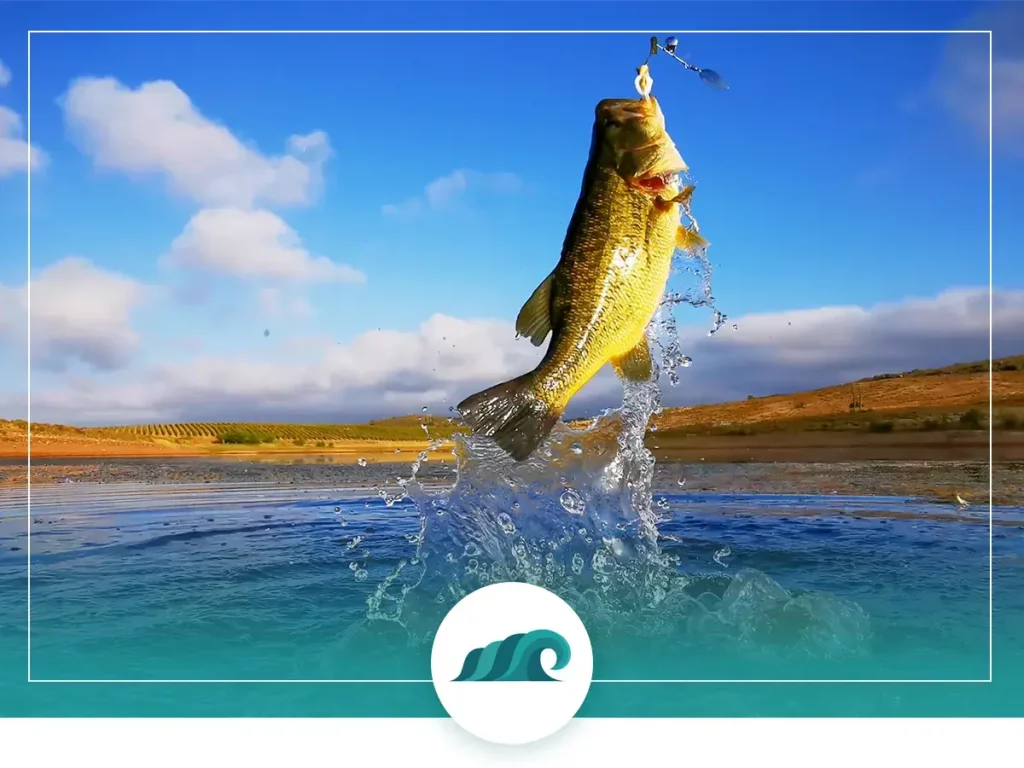
Once you’ve got a bass reeled in, the next steps for proper bass care are: removing the hook, holding and handling it, and then returning it to the water unharmed.
Removing the hook from the bass’s lip is done by firmly gripping the bottom lip and using a pair of fishing pliers or a fish hook remover to gently pull the hook out the way it came. It’s important not to use too much force or wiggle too much when removing the hook. You can cause injury to the fish if you’re not careful here.
If the hook is snagged, or too deep and difficult to remove, cutting it with wire cutters as close to the fish as possible is the next best option. Most of the time the fish will spit the hook out as it dissolves.
A very useful tool for this stage is a pair of fish-grips. Fish-grips (also called fish grippers/grabbers) are basically specialized vice grips designed to hold a fish by its bottom lip. They hold the fish in place and prevent it from wriggling or thrashing out of your grasp. These grips work by securely locking to the fish’s bottom jaw, and can be released instantly by flipping open the locking mechanism. Using a tool like this is good for the bass’s well-being as it can injure itself by thrashing around too much.
Slime Coat
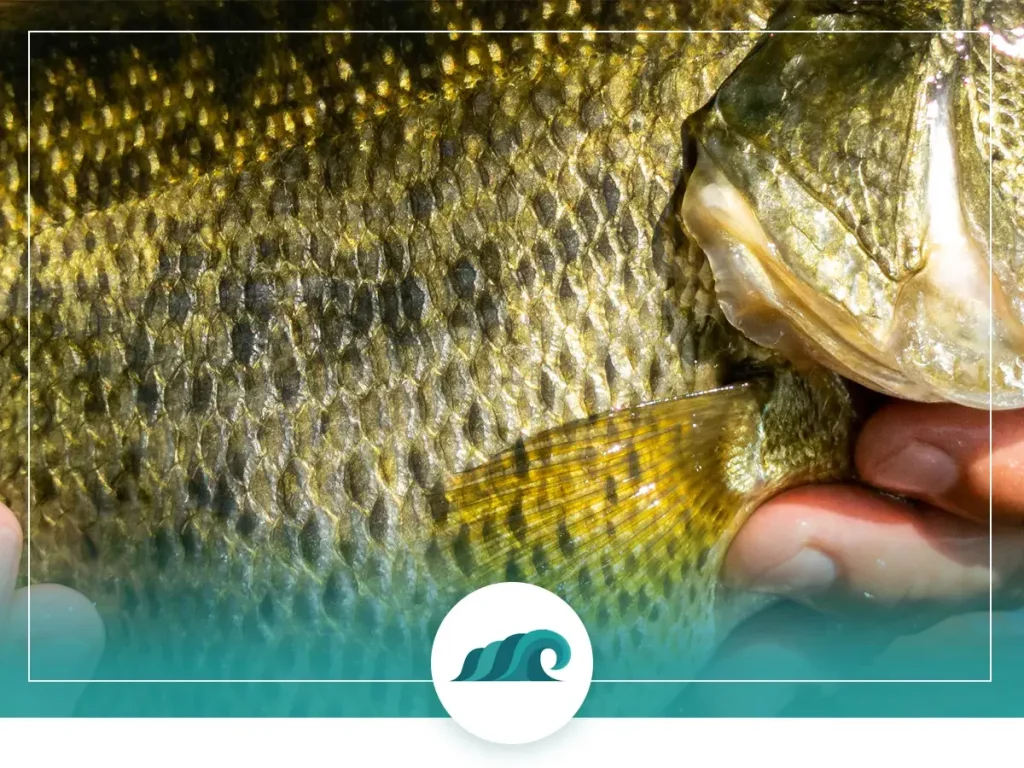
Another important thing to keep in mind while you’re handling a bass is its slime coat. If you’ve ever handled a fish before you’ll know what I’m talking about. The slime coat is the mucous membrane which coats the outside of most fish. It acts as a protective barrier against pathogens and disease, similar to the way human skin works. When handling a bass, you want to be careful not to scrape off its slime coat by handling it excessively. A good way to make sure you aren’t damaging the fish is to ensure everything that comes into contact with the fish (such as your hand or a cloth) is wet.
Bass Teeth and Bass Thumb
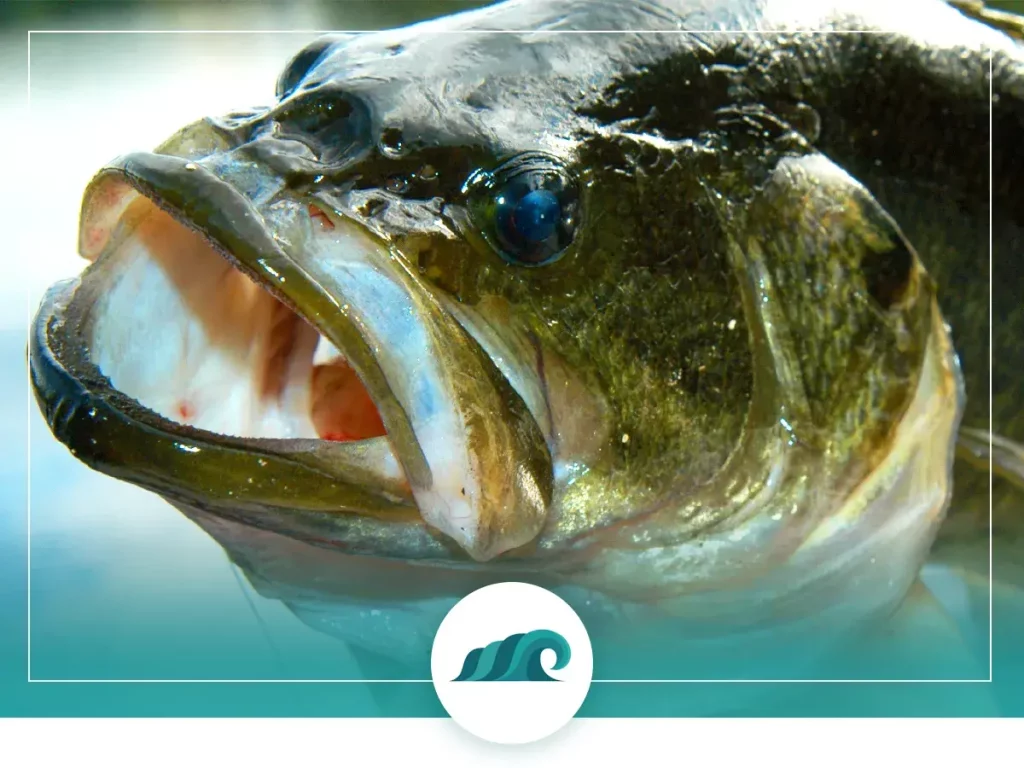
A common question beginner anglers often ask is “Do bass have teeth?”
Bass absolutely do have teeth, although they may be too small to see with the naked eye. Both Largemouth and Smallmouth Bass have layers of tiny villiform teeth distributed along their upper and lower jaws. These teeth face inwards in order to hold prey in place and prevent them escaping. Bass tend to swallow their prey whole, unlike other fish species with larger teeth – which bite and tear into their food.
Bass teeth can actually be quite abrasive. In fact, many anglers refer to the tiny cuts and scrapes inflicted on their thumbs from gripping a bass’s lower lip as “bass thumb”. For many anglers, a sore, scraped thumb is a point of pride – and a sure sign of a successful day of bass fishing.
How to Hold a Bass

Holding a bass correctly is fairly simple, but there are a few considerations to keep in mind when holding a bass: most importantly, the size and weight of the bass.
How to Hold a Larger Bass
When holding a larger sized bass (above 2-3 lbs.), there are two possible ways to hold the bass which ensure its jaw isn’t harmed. The vertical hold is where you grip the fish’s lower lip and let its body hang vertically in a straight line to the ground. It’s important to keep a firm grip in case the bass starts to thrash around. This method puts very little pressure on the bass’s jaw, and enables the fish to recover quickly.
The horizontal hold is where you use both hands to hold the fish at a flat, horizontal angle. You use the same grip as the vertical hold above on the fish’s bottom lip. Simultaneously your other hand cradles the fish’s belly and supports its weight.
You don’t want to grip the belly area too tightly though, as that could cause the slime coat to rub off. Simply support the weight of the fish with your other hand. This method is particularly useful for very large bass, as the extra weight can make it difficult to hold the fish vertically.
How to Hold a Smaller Bass
How you hold a smaller sized bass (less than 2-3 lbs.) is less of a concern, as these fish aren’t really heavy enough to sustain jaw damage from holding them at an angle. The best methods to use when holding a smaller bass are still the vertical hold and the horizontal hold. However, you can also hold a smaller bass at angle, as their body weight is not ample enough to cause jaw damage or dislocation.
The last step is returning that prized bass to the water so it can go back to its blissful underwater existence. Throwing the fish back into the water carelessly is a bad idea, as the fish will often be exhausted from putting up a fight. It needs time to recover its strength.
Hold the bass by its lower lip and gently ease it back into the water. Once you feel it start to move and kick, its regained sufficient strength and it’s ready for release. This will often take longer for bigger fish. You can also help it along by gently moving the fish back and forth so water passes over its gills.

